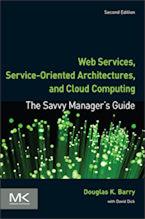One Model to Reduce Development and Maintenance Costs
Because an ODBMS stores exactly the same object model that is used at the application level, both development and maintenance costs can be reduced. With an ODBMS, there is no need to:

- Develop two data models: an object model in the application and a relational model stored in the database. This is not needed because an ODBMS uses the same object model as the application.
- Maintain two data models. An ODBMS eliminates the maintenance cost of keeping the to data models synchronized.
- Develop mapping between the relational and the object models. This is not needed because an ODBMS uses the same object model as the application.
- Maintain the mapping between the relational and object models. An ODBMS eliminates the maintenance cost of maintaining the mapping whenever there is a change to the object or relational model.
The result is that for a development team of six to seven, it is possible to have a team with one less person when using an ODBMS. It is typical when developing an object application with a RDBMS that one person is in charge of keeping the relational model synchronized with an object model and the mapping code. That person would not be needed in an ODBMS development project.
Context for One Model to Reduce Development and Maintenance Costs
Related Articles for One Model to Reduce Development and Maintenance Costs
Author
Douglas K Barry
Principal
You may use this material for your work or classes. Reprint Policy. Be sure to check the menu at the left for other articles available on this site.
The Savvy Manager's Guide
Douglas K Barry is also the author of a book that explains Web Services, service-oriented architecture, and Cloud Computing in an easy-to-understand, non-technical manner.
Web Services, Service-Oriented Architectures, and Cloud Computing: The Savvy Manager's Guide (Second Edition)
by Douglas K Barry with David Dick
This is a guide for the savvy manager who wants to capitalize on the wave of change that is occurring with Web Services, service-oriented architecture, and—more recently—Cloud Computing. The changes wrought by these technologies will require both a basic grasp of the technologies and an effective way to deal with how these changes will affect the people who build and use the systems in our organizations. This book covers both issues. Managers at all levels of all organizations must be aware of both the changes that we are now seeing and ways to deal with issues created by those changes.

